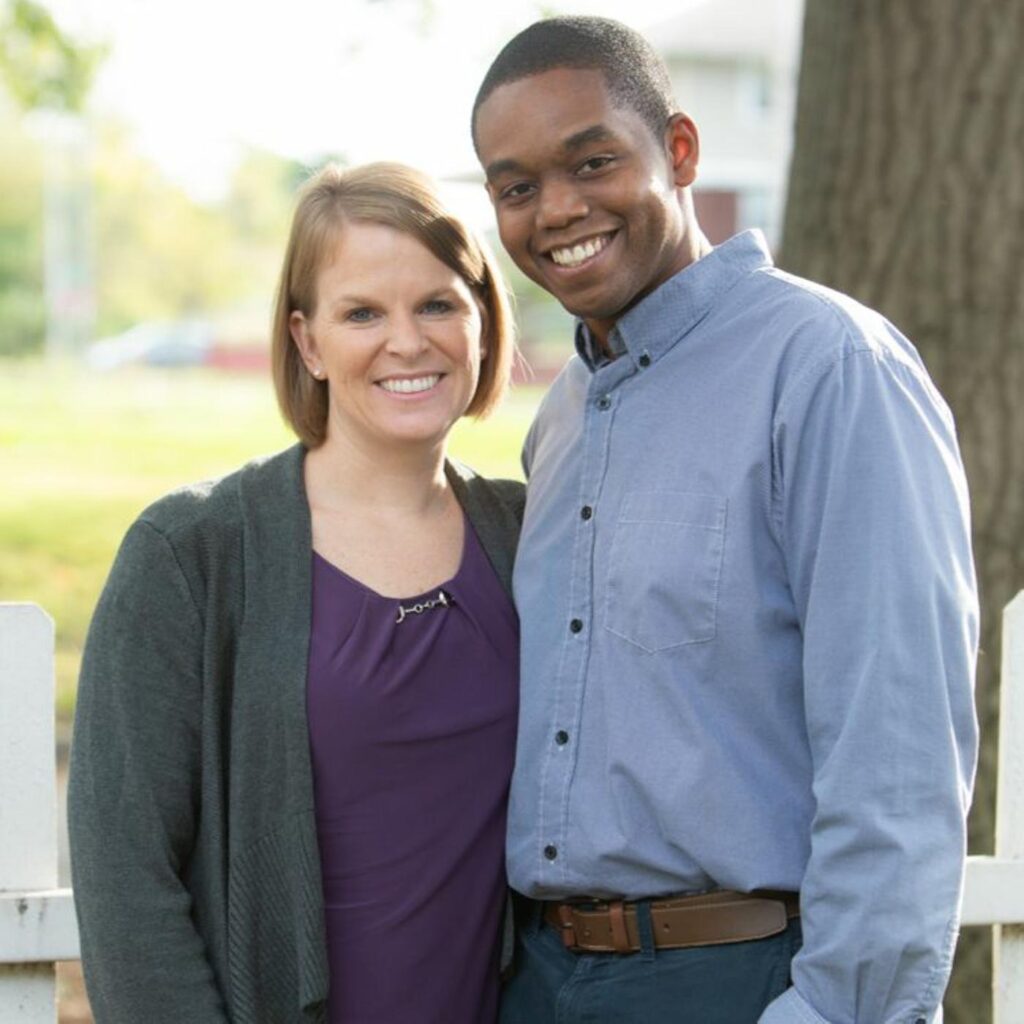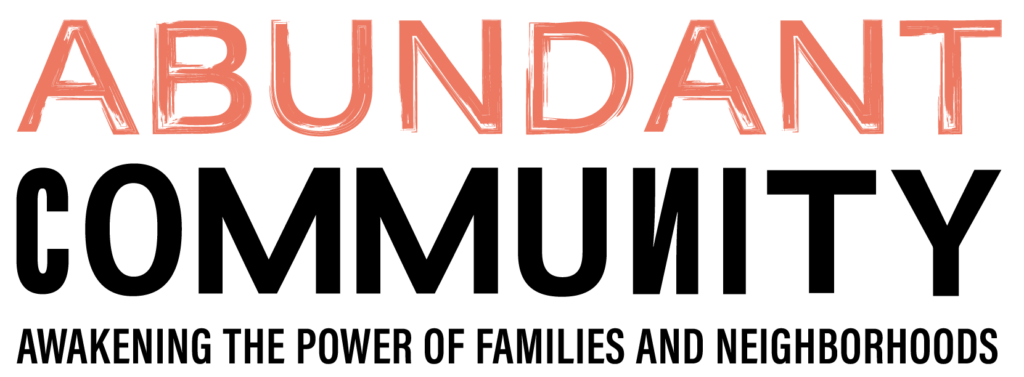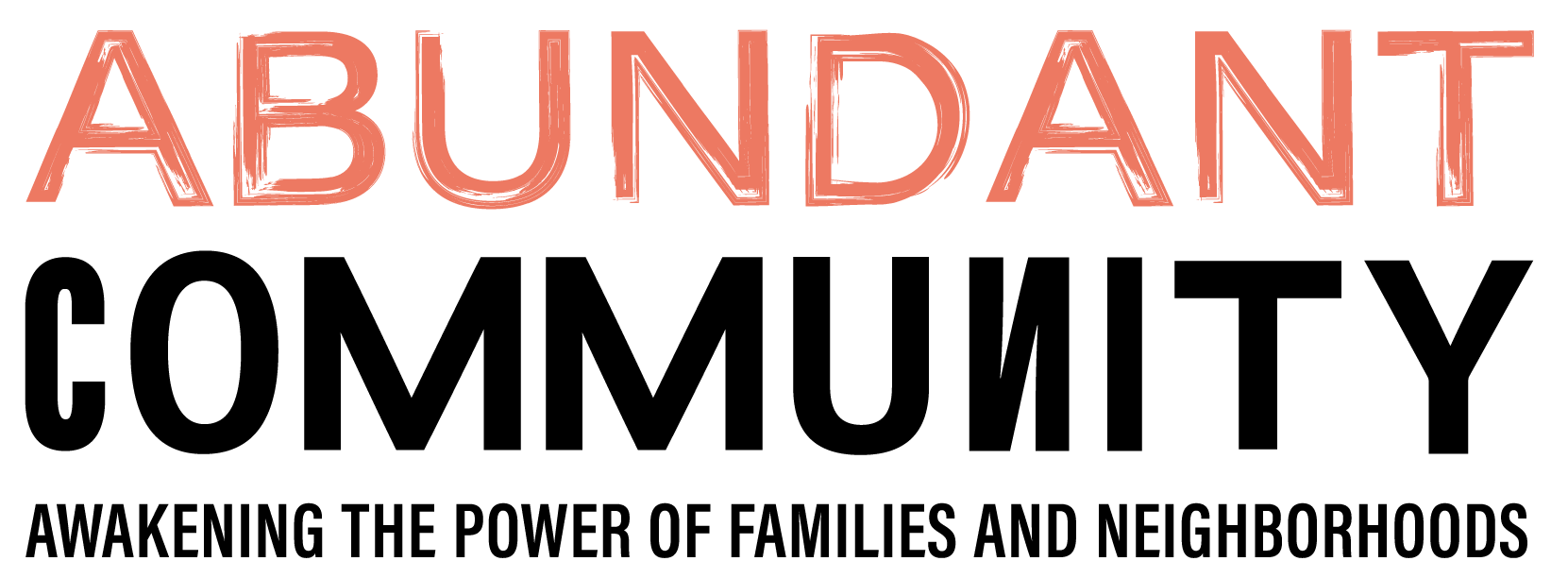What does it mean to be a neighbor? In what ways might it heal us to live in authentic, interconnected relationship with others who live and work just beyond our doorstep? How is the path to racial justice interwoven with the journey of coming to know the inherent dignity of our neighbors and our place?
The work and lives of Stephanie and Darryl Answer as parents, neighbors and founders of New Community Church in Kansas City offer inspiring starting points toward answering these questions.

In Season 2, Episode 14 of his podcast “Spiritual Capital” entitled “When a Place at the Table’s Not Enough,” Craig Mattson talks with Darryl and Stephanie to unearth their profound yet simple, everyday lessons from their work within their neighborhood and as a neighborhood church. In particular, they offer insight into how predominantly white organizations can partner with on-the-ground, hard-to-see neighborhood associations and become more connected, contributive neighbors.
Below are samples of their thoughtful exchange.
Why did you decide to do work at the neighborhood level?
Stephanie: I started in college. Just love relationships. I just loved being in community. And while I served in programs, it was the authentic relationships I formed over time that have been life-changing for me.
Darryl: I grew up in London, in our version of public housing. I remember going to the laundry mat, going there to wash our clothes. I remember community being built in the laundromat, community being built in the street — all the kids playing soccer in the middle of the street, almost getting hit by cars. I remember some downstairs neighbors setting their house on fire and the community coming to take care of us. I remember somebody hitting my Mom’s car and they dragged him to our apartment. I grew up in this community where we took care of each other. There was a disconnect – there was my community life and my church life, which was totally disconnected from community.
“Place” is complicated. It’s mysterious. There is more going on in any place than meets the causal glance. How does our place shape your work? Why is place so important to your work? (Especially in this digital age.)
Stephanie: This past season of moving all of life to virtual rooms has been interesting. We have not yet gathered back in person on a Sunday morning. It’s over a year now that we’ve been gathering online.
However, because we do focus on neighborhood, because we do focus on neighborhood, on proximity in a geographic area, as I talk to other ministers pastors, this season has been a challenge for them because everything has been so disconnected, but I feel like, for our church, we’ve been able to stay connected. And it’s been seeing each other because we live down the street from each other. Or, seeing each other because we can just go by each other’s houses and sit on the back porch or sit on the deck. You know, finding ways to gather.
Really, our community hasn’t skipped a beat. Our relationship is what has held us together, as compared to what I’ve heard from other colleagues. Even when we’ve had to socially distance, we were able to stay connected.
There’s also a digital divide as they call it. We lose an entire group of people when we don’t have physical place. Some of our older neighbors who aren’t on the internet–the conversations that have happened when we walked outside. There are things you wouldn’t know if you are connected only in digital space.
Darryl: I think idea of place is so complex. There’s the relational but also the health aspect. I feel like our health is also determined by how we engage with place. I think it’s the book Bowling Alone, the author talks about our relationships in the place where we find ourselves, our social connections.
Yes, being online, technology advances that, but there’s also something about receiving a hug. There’s also something about being in an environment that’s plagued by violence. The trauma of a community and that place impacts us.
So not only are there benefits to being in a place and engaging, but we also help to make it healthier by the ways that we engage. I’ve heard many people say that your best alarm system is your neighbor. Get to know your neighbor.
I think the reasons for engaging in place are so vast. We learned this from native theologians and also I take Tai Chi, so the idea of being grounded in place. Chi, you know, centering ourselves.
I think we live in a society that’s so fast-paced, always trying to move. But there’s something about stopping and observing where you are. Trying to connect with that place. I think it can be healing for us in so many different ways. I think place is something we overlook but it’s also something we all desperately need.
Advice would you give to people for really seeing their neighborhood life and ecology?
Stephanie: We took a lot of walks. That’s the first thing that comes to mind.
And I think whether you’re talking about, as an individual I live on this street. But if I am the leader of an organization, I’m still a neighbor. And my organization is still a neighbor. So how am I cultivating relationships between neighbors?
And so I think sometimes we can often forget as we’re running programs and services that we are also a neighbor. And do we know our neighbors? And, do they know us?
One thing that helped us a lot in the beginning is we literally walked all throughout our neighborhood. We would stop in corner stores or daycares. We got to know the folks who were running programs, offering services, having a store at the same time that we got to know the residents who were living there. When you walk, you see things differently. You notice the parts of the sidewalk that are or are not there. Walking has been really powerful for us as well as listening and learning the stories. How did this person come to open their business and what was it like years ago, vs. now? Or are they new? To just hear the stories.
So walking has just been so powerful for us along with listening and learning the history and seeking those who have been there longer and hearing what has happened over time.
Darryl: I think listening is key, and also finding those leaders, those connectors. Not just people who have a position. Many times we only associate leadership with a title. But many times there are folks in an organization who are leading but they don’t have an official title and organization.
Also, economically, where are your resources going as far as who are you hiring? Are you hiring livable wages in the community? Are you a nuisance? It’s one thing to take up space, but then how are you connecting to the ecosystem of that community? How are you helping to make it a better place? If you have different amenities, how can that be used by the community. I think of churches in our community that have full gyms that nobody can use. They don’t trust the community!
Building trust, listening, being a convener, being a connector, being a learner – I think those are all important pieces.
Stephanie: And I think you touched on this also, investing your dollars there. As an organization, if you’re doing a corporate lunch, where are you getting your catering from? If you are buying toiletries or things from your office, where are you purchasing your products? Just simply by circulating your dollars and keeping them in the community, that’s helpful. And that’s a way of being connected and thinking about, how do you invest in the people and the other organizations and services that are there? When you need something, do you look first at how you can meet those needs through your own neighborhood?
Race, White Supremacy, and Trust
Darryl: At least in the past year with all the uprisings that happened, especially after George Floyd’s death, we had a number of churches reaching out and trying to partner with us. And at the same time, we are trying to walk our people through this as many people are triggered. Really trying to center them. But then we have these people reaching out to partner with us. And many times it’s out of guilt, like, “Ooh this is happening. Let me find some people of color.”
So first of all, don’t do that. ‘Cause we can tell.
But then the second thing I have told them. There’s talk of race and racism, and I feel like especially this younger generation is pushing us talk about White Supremacy and whiteness. But not White Supremacism like the KKK, but white supremacy as this hierarchy — this understanding or ideology that white is normal. A simple example of that is if I go to the store, I need to buy a product for my hair, I go find the “ethnic shelf” (and it’s usually just a shelf), then there’s a whole aisle of stuff for “normal hair.”
So an encouragement for organizational leaders is to do that work internally. How does whiteness exist? There’s a lot of work on white supremacist culture within organizations. How does WS culture manifest itself in me, in our organization? Because when you approach a partner from white supremacist culture, there’s going to be conflict.
I don’t think we should jump straight to partnership. I think it needs to be more doing the inner work. Educating yourself, not asking people of color to educate you.
Stephanie: After you’ve done that work, then you approach mutual relationships. Knowing that we both are coming to the table with something to offer each other.
You have to trust those you are looking to partner with. Things at the grassroots community level can sometimes function and process and look very different from what you think business strategy-wise makes the most sense. But I think you need to trust those you are looking to partner with. And trust that it might look different than the plan you might have imagined. But what is it that is happening on the ground and happening in the community and how can you be part? Not that you have to join in and lead the way. And even join in and follow, and maybe do some things that feel weird or pointless or silly or, “Why – how is this helping, how is this making a difference?”
Trust that the folks you are looking to partner with know what is happening in their community and know what’s needed and know the way to do it.
Friendship vs. Liberation, Unity vs. Justice
Darryl: Each party has to know what the intended goal is. Usually, white people approach a partnership wanting friendship but people of color want liberation. That’s another reason why these things fall apart. Because we have a completely different goal. Do we all want liberation and freedom for everyone or is it just that you want to be in close proximity to color to feel better in this moment.
What comes first – the unity or justice? Justice comes first. It’s impossible for us to be united when one of us continues to face injustice and the other one continues to benefit. Can we really have friendship?
I think it was Austin Channing Brown. She said, “My friends are people who continue to do the work even if I’m not around.” They’re doing the internal work, they’re continuing to work for justice. She says, “Those are my true friends.” When you really care for somebody, you want their freedom as well. And then you’ll recognize the areas where you’re benefitting or you’re just able to live your life or systems just work for you, you’re able to navigate them, but you know that’s not the case for someone who you’re trying to pursue friendship with. Hopefully that will then change the dynamics of your relationship and you will then move from associates to allies, which is a word that some folks will use. And then you start to leverage your privilege for the sake of the other, and then it becomes mutual. Because there’s definitely things that we can learn from each other.
It’s hard. Especially at a time when people are crying out for justice on every level. It’s really hard.
I would really struggle with someone saying to me, “Hey I just want to be your friend. Let’s not talk about that stuff. Let’s just go out to dinner. I’ll buy you lunch.”
It’s like, “Wow, OK. Do you really see me?”
Can We Reimagine the Table?
Darryl: Also something I’ve been contemplating a lot this year is the idea of, “Hey, come to the table. How do we get people of color to the table?”
I believe the table itself is wrong. We need to destroy the table and build a new one. Which I think goes back to the inner work.
All of this takes having a brand new imagination. So can we reimagine the table we all have to come to? Can we reimagine place? And can we join our neighbors in creating that together. But to do that, I have to see the inherent value of my neighbors and the inherent value of this place. We are interconnected. You know, it’s like Dr. King said, we are all woven in this garment of destiny. Or, we were reminded this weekend of the aboriginal activist, something alone the lies of, “My liberation is tied to your liberation.”
Again, we just need to have a different imagination and starting point for this work because we’ve been stuck for a long time.
Going Further:
- Connect with and learn more about Stephanie and Darryl’s church at their website and facebook page
- The Neighborhood is the Center (Harges, McKnight, Block)
- Finding Abundant Community in Unexpected Places (Mather, McKnight, Block)
- White Supremacy Culture (Okun)


